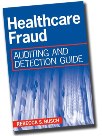Renewed interest in detecting and preventing health care fraud

In an effort to identify any and all ways to shore up the financial stability of Medicare and Medicaid programs, the Obama administration has announced the formation of a task force focused on the use of technology to detect and help prevent health care fraud, as noted in an article in today’s Washington Post among other places. Experts in this area have long disagreed on the level of fraud activity in the U.S. health care system, with government officials typically estimating the percentage of Medicare and Medicare payments made due to fraud in single digits, while other estimates put the proportion as high as 20 percent. With this issue, the way technology has been used to drive efficiency in claims processing is a bit part of the problem, but there are many potential uses of technical monitoring and analysis tools that could help the government recapture some of the enormous losses due to fraud and use that money to offset some of the other drains on major healthcare entitlement programs.
To anyone interested in understanding the nature and extent of this problem, as well as gaining some insight into possible solutions,  I strongly recommend Malcolm Sparrow’s License to Steal, which despite being written over 12 years ago (updated in 2000) remains highly relevant to the problem of health care fraud in the United States. Going back to the days when the Centers for Medicare and Medicaid Services (CMS) was known as the Healthcare Financing Administration (HCFA), Sparrow contrasts the inherent conflict between government program managers seeking to automate the claims processing system as much as possible and the need to slow down (in some cases) that same processing in order to do the sort of analysis that would help reduce payment of fraudulent claims.
I strongly recommend Malcolm Sparrow’s License to Steal, which despite being written over 12 years ago (updated in 2000) remains highly relevant to the problem of health care fraud in the United States. Going back to the days when the Centers for Medicare and Medicaid Services (CMS) was known as the Healthcare Financing Administration (HCFA), Sparrow contrasts the inherent conflict between government program managers seeking to automate the claims processing system as much as possible and the need to slow down (in some cases) that same processing in order to do the sort of analysis that would help reduce payment of fraudulent claims.  While some great strides have been made in technical means of fraud detection (for example, CMS can now verify patient social security numbers associated with submitted claims, something that was not possible ten years ago), it seems there remains a great opportunity to drive costs out of the system simply by ensuring payments are made correctly for legitimate claims. (In the interest of full disclosure, I should point out that I worked as a course assistant for Professor Sparrow while in graduate school). Another excellent and somewhat more recent treatment of this topic is Healthcare Fraud by Rebecca Busch.
While some great strides have been made in technical means of fraud detection (for example, CMS can now verify patient social security numbers associated with submitted claims, something that was not possible ten years ago), it seems there remains a great opportunity to drive costs out of the system simply by ensuring payments are made correctly for legitimate claims. (In the interest of full disclosure, I should point out that I worked as a course assistant for Professor Sparrow while in graduate school). Another excellent and somewhat more recent treatment of this topic is Healthcare Fraud by Rebecca Busch.
 SecurityArchitecture.com
SecurityArchitecture.com
